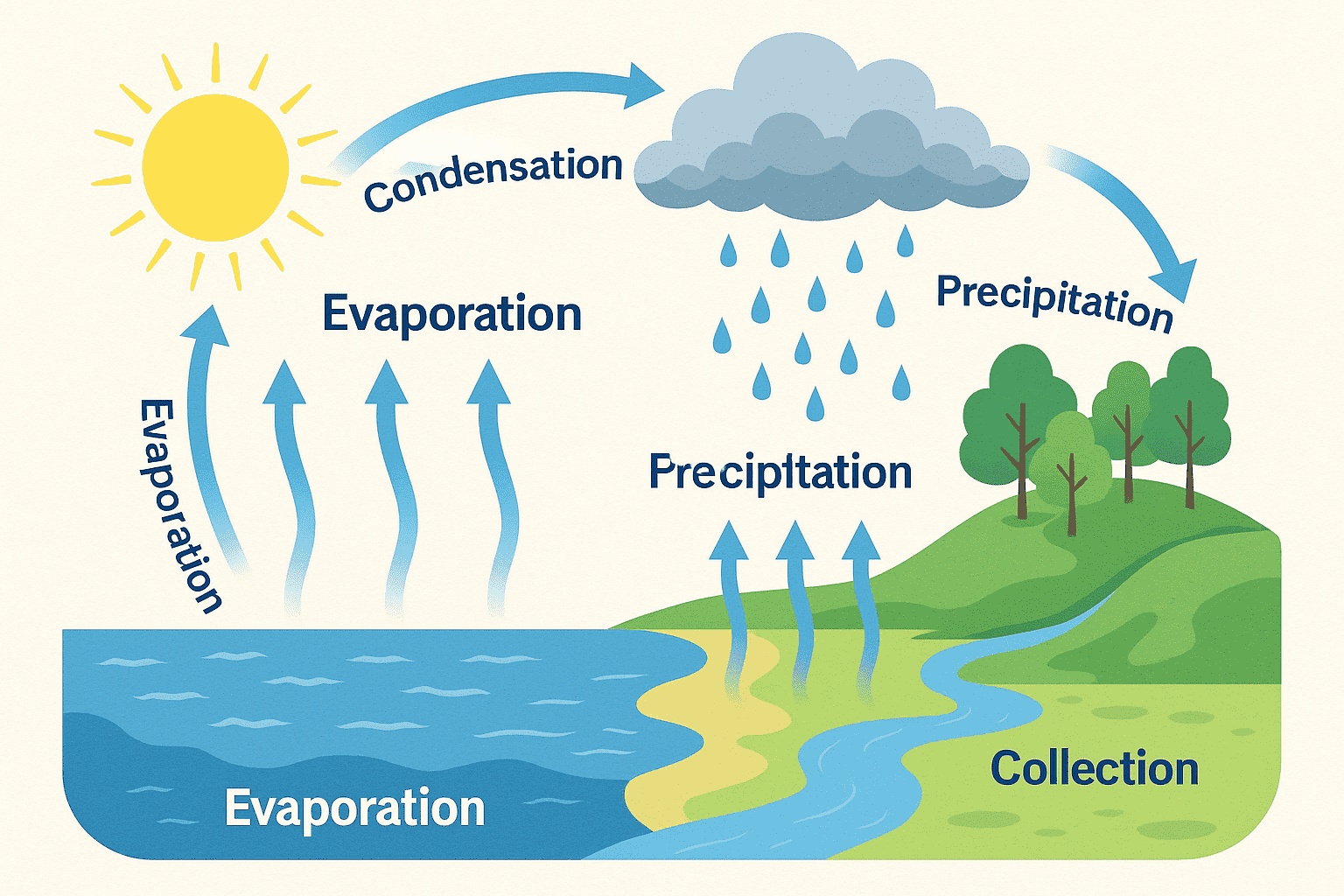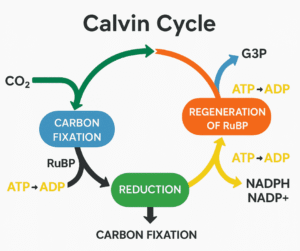Water Cycle: The Continuous Journey of Earth’s Most Valuable Resource
The water cycle, or the hydrologic cycle, is a natural and continuous process that moves water through the atmosphere, oceans, and land of the Earth. Such a system supports life and creates weather systems for its existence on the Earth and webs of ecosystems. Knowing this cycle is not just important for academic purposes; agriculture, climate consciousness, environmental care, and urban development all rely on it.
This article will now take each step of the water cycle in detail, look into the importance of this cycle, and comprehend the technical principles behind the formation of such a mechanism.
What Is the Water Cycle?
The water cycle is a closed loop in application, meaning that water continuously changes its state between liquid, gas, or solid while it circulates throughout the Earth. With solar energy and gravitational force acting as the main engines, this cycle makes sure that water keeps hopping from atmosphere to oceans, rivers, land, and underground reservoirs.
Key Stages of the Water Cycle

1. Evaporation
The heat of the sun causes water to turn into vapor when its rays subject oceans, lakes, rivers, or other water bodies to heat. About 90% of atmospheric moisture is contributed by oceanic evaporation.
It is said that: Sun rays heating a puddle of water lead to its disappearance over time; that process describes evaporation.
2. Transpiration
Plants transpire water vapor from their leaves. The two processes of evaporation and transpiration together are called evapotranspiration.
Example: Huge quantities of water vapor are released by trees in big forests such as the Amazon, affecting rainfall in these regions.
3. Condensation
As water vapor ascends, it cools down to tiny droplets that evolve into clouds, wherein gas-to-liquid transition occurs with air cooling at a higher altitude.
Example: The dew to form on grass occurs through condensation.
4. Precipitation
When droplets in clouds join together and grow heavy, they fall upon the Earth as precipitation — rain, snow, sleet, or hail — depending upon the temperature and conditions.
Trivia: On one average, the world is annually hit by around 505,000 km³ of precipitation.
5. Collection/Accumulation
Once precipitation finds its way to the ground, the water finds its way into various rivers, lakes, oceans, and reservoirs of groundwater. Some portion of it traverses the soil, recharging aquifers, which is really an important source of potable water.
Infiltration and Runoff
- Infiltration: Water entered the soil and migrated through porous rock formations. This sustains subterranean water systems like wells and springs.
- Runoff: Water flowing over the surface of the land and back into water bodies when the land cannot absorb any more water. Poorly managed runoff in urban areas often causes floods.
Why Water Cycle Is Important?
Regulates Climate
Evaporation cools Earth’s surface, while cloud formation affects the weather. Thus, the water cycle distributes energy from solar radiation all around the planet.
Supports Life Nourishing the Life
Without its water cycle, the freshwater will deprive all living organisms depending on survival. Plants take the water for photosynthesis, and animals both directly or indirectly rely on water.
Recharge of Natural Water Sources
The water cycle ensures that underneath aquifers and surface water bodies are replenished every time. This is very important for agriculture, drinking water, and industries.
Human Impact on the Water Cycle
While the water cycle is a natural cycle, human interventions can set its balance off:
- Urbanization: Concrete surfaces reduce infiltration and increase runoff.
- Deforestation: Reduces transpiration and affects local rainfall.
- Pollution: Industrial and agricultural runoff can contaminate collection points like rivers and lakes.
- Climate Change: Increased temperatures speed up evaporation, potentially altering precipitation patterns and increasing droughts or floods.
Scientific Significance of the Water Cycle
The water cycle is not just an environmental process—it’s also a scientific system that assists us with:
- Predict weather patterns (meteorology)
- Manage agricultural irrigation
- Study climate change and global warming
- Monitor freshwater availability
- Develop environmental conservation strategies
Is the Water Cycle Really a Cycle?
Yes, and it’s a closed cycle materials; hence no water is lost or gained – only redistributed. Therefore, the total amount of water present in the earth keeps on being relatively constant. Yet the nature of water keeps on changing and so does its place by either natural processes or human impacts.
Real-Life Applications of Understanding the Water Cycle
- Weather Forecasting
Satellite technology tracks evaporation and precipitation to predict rain or storms.
- Farming & Irrigation
Knowing the stages of water availability helps farmers plan irrigation schedules.
- Flood Control & Drainage Planning
Engineers use hydrological data to design better drainage systems in urban spaces.
- Education & Climate Policy
Governments and NGOs use water cycle models to design sustainability policies.
Manifesting Conclusions
The water cycle is more than just a topic in schools; it is an existence-sustainer that affects everything from agriculture to global climate patterns. Understanding and respecting this cycle would help us pursue better natural resource management, brace for extreme weather, and ensure sustainability.
As a student, educator, researcher, or policymaker, knowing the working of the water cycle helps to rightly decide on eco-conscious matters.
See This Also: Explaining the OPSEC Cycle: The Stages, Significance, and an Actual Real-World Scenario



